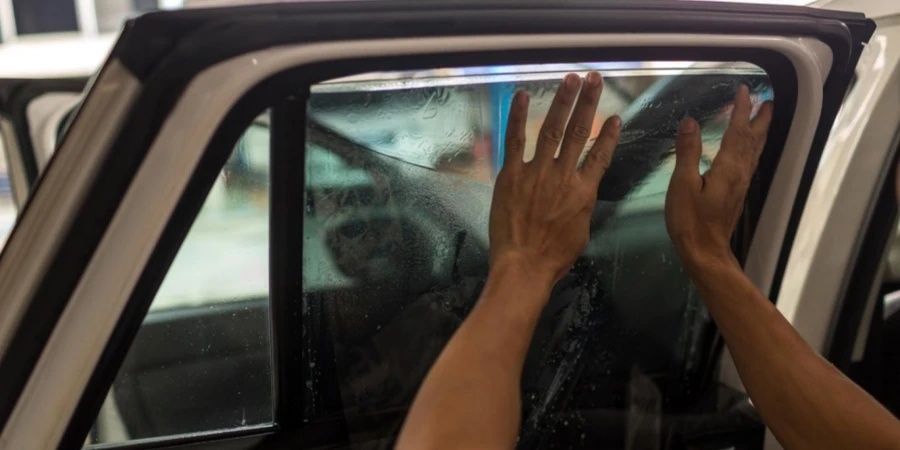Table of Contents
1. Introduction
2. Global Market Overview
3. Key Considerations for Selecting Car Films
4. Exploring the Best Car Film Types and Technologies
5. Conclusion
Introduction
Car films have become essential in the automotive industry for improving the look of vehicles and providing lasting protection against scratches and UV damage. They are also good at enhancing privacy and temperature regulation capabilities. For e-commerce businesses specializing in car products in 2024, it is important to grasp the details of car films to serve a wide range of customer preferences effectively. Choosing top-notch car films does not just meet customer demands but also builds a strong brand image that positions retailers as industry leaders in a competitive market environment.
Global Market Overview
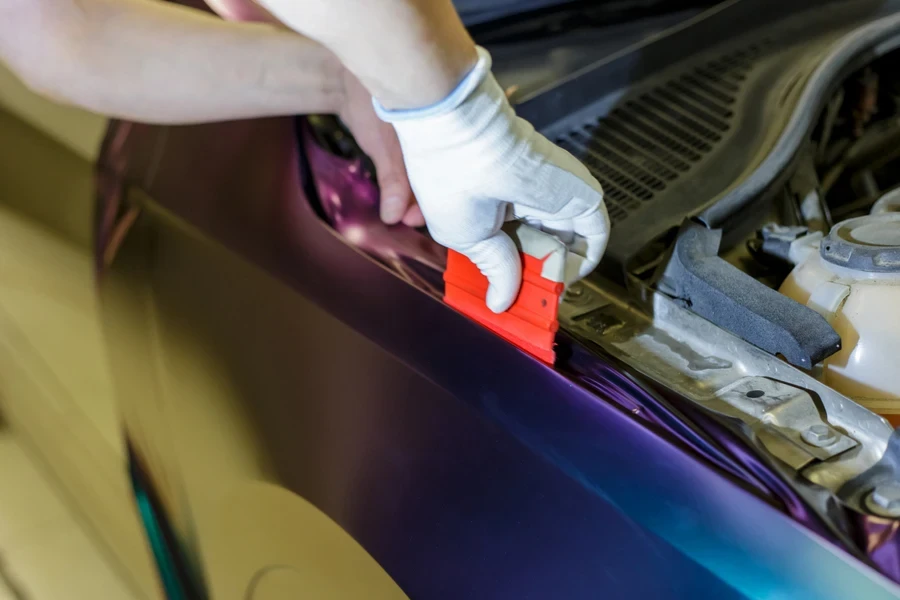
Understanding Market Dynamics
The automotive film sector is experiencing expansion due to growing consumer interest in enhancing the look and protection of vehicles. With a large number of individuals owning cars globally, the need for films that safeguard against harm and boost aesthetics is on the rise. There is an increasing market for paint protection films (PPF) as people look for ways to extend the lifespan of their vehicles and keep them looking good. Between 2023 and 2024, the market value is expected to grow by 7% as emerging markets see growth driven by the burgeoning automotive sector.
Statistics and Data on Car Film Industry
The worldwide automotive film industry is forecasted to exceed $12 billion by 2024 due to advancements in film production technology. Modern tech enhances product durability and functionality with features like self-repair films and ceramic films, which provide heat resistance capabilities.
Car films are highly sought after in North America and Europe due to their emphasis on innovation and quality standards. In these regions, consumers are choosing premium films that offer both protection and visual appeal as their priority. The growing popularity of vehicles has led to an increased interest in films that focus on better thermal control and UV protection. According to reports, 85% of consumers in these areas prefer high-performance films, resulting in a market value surpassing $3 billion in 2023.
Key Considerations for Selecting Car Films
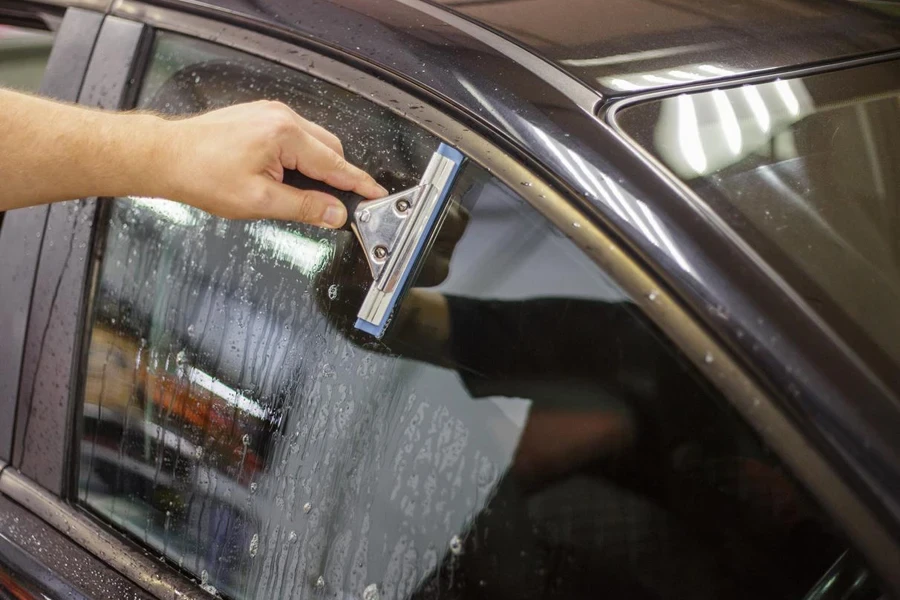
Durability and Protection
When choosing car films for your vehicle protection and appearance, it is important to consider durability. Durable films can withstand environmental impacts like UV exposure and road debris while also enduring harsh weather conditions to ensure long-lasting quality and value retention for your vehicle. It is important to select high-quality car films that offer protection against elements that can cause damage over time, such as UV rays from the sun or debris encountered while driving. These protective features play a role in preserving your vehicle’s appeal and overall value in the long run. In addition to durability considerations when selecting car films, scratch resistance and self-healing properties are aspects to take into account. Self-healing films are highly beneficial as they have the ability to automatically repair scratches that may occur during use, thereby helping maintain the surface of your vehicle looking flawless, with minimal effort required for upkeep.
Top car film brands are recognized for their good attributes. There are films boasting extended warranties showcasing their longevity and capacity to uphold the appeal of a vehicle over a long time, ultimately preserving its resale worth as well as cutting down expenses in the future.
Aesthetic Appeal
Car films offer a range of upgrades that play a big role for buyers to contemplate on when making a choice. The finishes on these films vary from glossy to matte, and customized designs to suit tastes. A glossy coating enhances the shine of the vehicle, giving it a refined appearance. Matte finishes offer an elegant look, whereas custom designs give room for individualized vehicle aesthetics.
It’s important to find a balance between looks and practicality when it comes to a film product. It should not only be visually appealing but also perform well. Making sure that the film not only looks good but also offers protection is key to providing customers with a well-rounded product. Retailers should think about offering films that enhance aesthetics while still ensuring they are protective and long-lasting in nature.
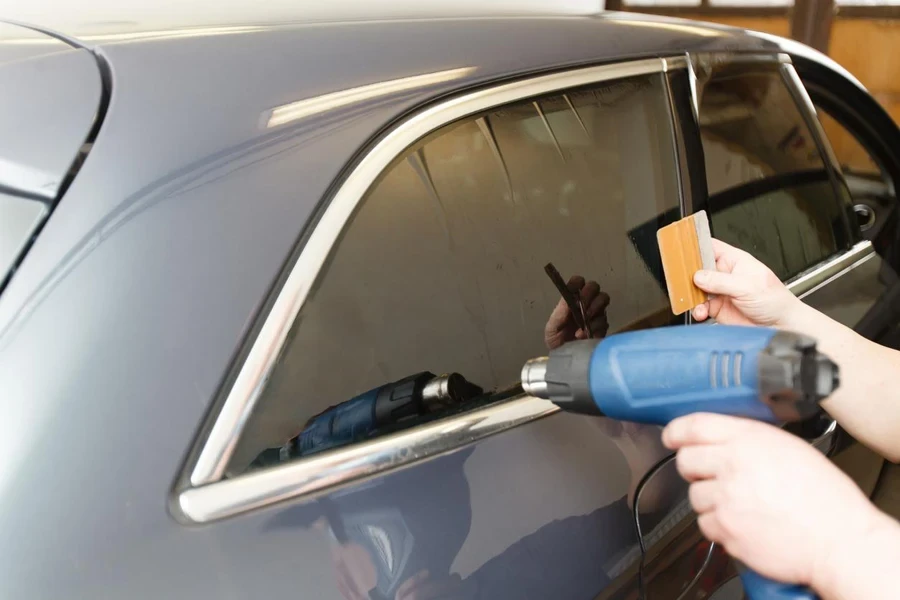
Installation and Maintenance
Installing car films correctly is key to maximizing their performance potential. When experts handle the installation process, they install the film without any bubbles or flaws that could ruin its appeal and effectiveness enhancing your vehicle protection and style needs.
Taking care of your car films is crucial for their durability in the long run. Regularly cleaning them with the right automotive soap can keep the films looking good and intact. It’s essential to steer of materials and strong chemicals to ensure the films last longer. Addressing scratches on self-healing films promptly can also maintain their looks and performance over time.
Cost vs Quality
Cost is key when choosing car films, as it’s important to strike a balance between quality and budget limitations. The initial expense of premium films may be higher; however, they usually provide better protection and durability which can result in long-term cost benefits. Opt for top-notch films to minimize the need for replacements and repairs, thus saving money in the long run.
There are many budget-friendly choices that give you the right balance of protection and style for individuals with budget limitations. Stores should have a range of items to meet customer requirements by having both luxury and reasonably priced selections at hand. The lasting advantages of putting money in top-notch films, like car resale value and improved longevity, frequently make the initial cost worth the investment.
Environmental Considerations
The car film industry is seeing a rise in consumer preference for eco options that prioritize sustainability by using sustainable materials and processes in their production methods. As more consumers aim to minimize their footprint and embrace sustainability practices in their purchasing decisions, biodegradable and recyclable films are becoming increasingly popular.
Environmental rules also impact the choice of products in the market for manufacturers and sellers who need to meet eco standards to stay in line with consumer preferences and legal guidelines while gaining a competitive advantage in the market.
Exploring the Best Car Film Types and Technologies
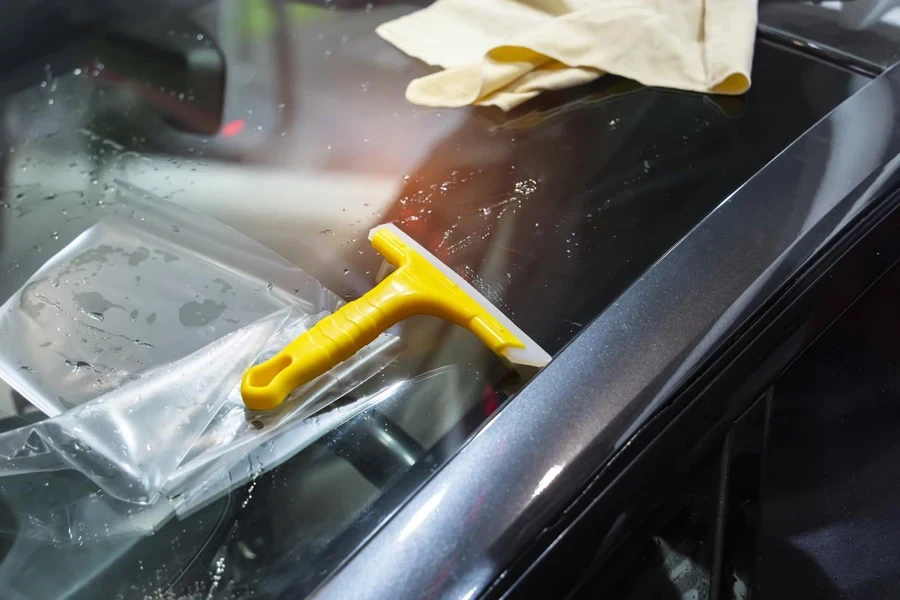
Clear Bra Paint Protection Films (PPF)
Utilizing Clear Bra Paint Protection Films (PPFs) stands out as a top-notch choice for shielding a car’s paintwork from the impacts of road debris like stone chips and environmental pollutants with effectiveness. These transparent films manage to preserve the vehicle’s color brilliance while offering a protective coating layer. The recent progressions in PPF technology bring about durability with certain films even boasting self-repair capabilities that allow them to mend minor scratches and scrapes independently.
PPFs are commonly crafted from urethane material known for their flexibility and durability properties that enable them to absorb impacts and shield the paint beneath from harm effectively. Moreover, PPFs frequently come with warranties that ensure their functionality over the years, highlighting their lasting nature. For retailers, providing top-notch PPFs can attract customers seeking protection for their vehicles without compromising the vehicle’s visual appeal.
Tinted Films
Tinted films offer two advantages: they increase privacy in vehicles while also making them more comfortable by lowering interior heat levels. They are created to shield against UV rays that could harm vehicles inside and impact the well-being of passengers. By blocking out a considerable amount of solar energy, tinted films assist in keeping the cabin cooler, thereby decreasing reliance on air conditioning and enhancing fuel efficiency.
The tint level can differ to give consumers the degree of privacy and heat protection they want to achieve. Nevertheless, it’s crucial to take into account regulations as certain areas enforce laws on the tint level for windows. Stores should provide a variety of choices to accommodate preferences and regulatory requirements.
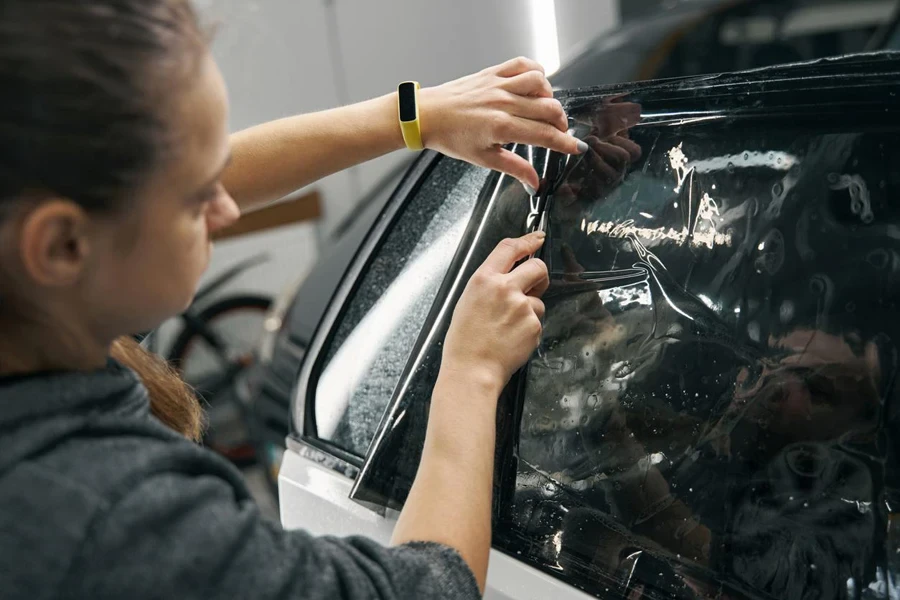
Ceramic Films
Many car owners opt for ceramic films due to their heat-repelling abilities and clear visibility features that offer top-notch protection and performance benefits for vehicles. These films utilize cutting-edge nanotechnology to deliver insulation while maintaining excellent visibility levels. Unlike metalized films that may disrupt signals in GPS and other communication devices found in vehicles, ceramic films are a preferred choice as they do not interfere with these signals.
Ceramic films offer a benefit in blocking all UV rays and minimizing glare by up to 99%, thereby improving driving comfort and safety levels significantly. They also boast excellent durability and resistance to fading, which helps them retain their look for long.
Self-Healing Films
Self-repair films are a state-of-the-art advancement in film technology. They are designed to fix scratches and swirl marks without much upkeep needed for a flawless look. The self-repair feature is usually triggered by heat so that the film can mend itself when it comes into contact with sunlight or higher temperatures.
Customers who value keeping the appearance of their vehicle without the need for professional refinements find this technology quite attractive and practical.
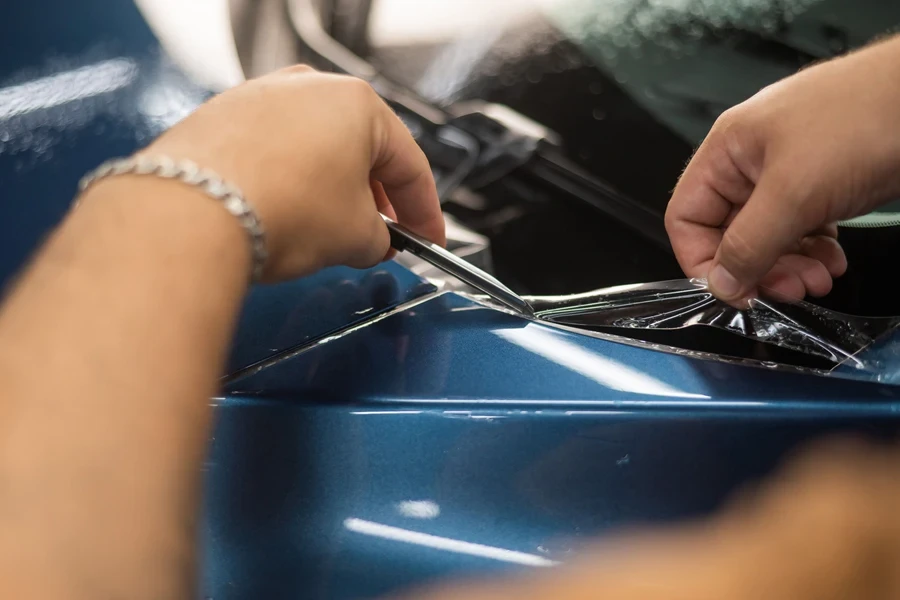
Metalized and Hybrid Films
Metalized films are recognized for their long-lasting nature and effective shielding against UV rays. These films contain metal elements that bounce back heat and light effectively to offer energy deflection. This characteristic aids in maintaining a good temperature within the vehicle and minimizing glare, thus improving the comfort of passengers and ensuring safety while driving. Nevertheless, it is crucial for consumers with automobiles to note that metalized films might disrupt signals.
Hybrid films that blend various technologies bring together the strengths of materials, like the lasting power of metalized films and the friendly features of ceramic films. Hybrid films deliver a rounded performance by offering heat rejection and UV protection while being compatible with electronic gadgets.
Conclusion
It is crucial to pick the right car film to enhance vehicle safety and appearance while boosting performance levels. With advancements in technology paving the way, Clear Bra PPFs and tinted films, alongside ceramic coatings and self-healing options, are providing a variety of benefits tailored to suit consumer preferences excellently. Online retailers can take advantage of these innovations to meet customer needs and position themselves as key players in the industry landscape. By prioritizing aspects such as quality assurance and eco-friendliness while also ensuring the durability of the products on offer, retailers can attract discerning clients and drive business growth amidst competition within the car film market realm. Offering a selection of top-quality products guarantees customer contentment and lasting benefits.
